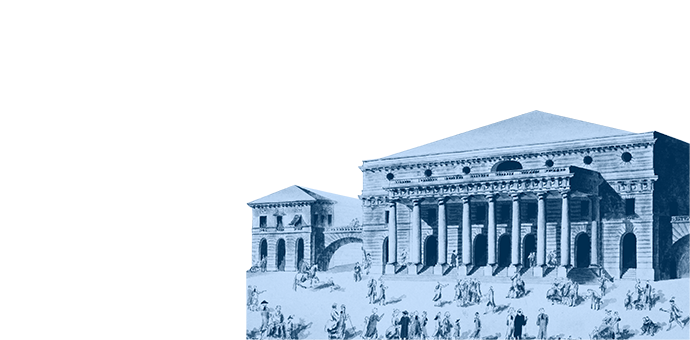The Odéon neighborhood
The Saint-Germain neighborhood was the intellectual and artistic heart of the Revolution in Paris. Many journalists, deputies, scholars and artists resided here. Printing houses in the neighborhood worked day and night and, not far from here, the Theater of the Nation (currently Odéon) started making a name for itself as of 1789. Several hundred meters further on, sans-culottes gathered together in one of the most radical political clubs: the Cordeliers. Located in the former monastery of the same name, they were among the first to yearn for the advent of a Republic. In the street opposite, the famous deputy and journalist Marat was murdered in his own home in 1793. However, the neighborhood was also overflowing with cafés in which patriots imagined and organized the Revolution’s major events. Erected at the end of the 19th century, the statue of Danton is also a commemorative site: it marks the location of the famous revolutionary’s house.

 Chronology
Chronology
-
July 13, 1793
Marat is assassinated in his own home by Charlotte Corday -
1789
The play Charles IX by Chénier causes a political scandal at the Theater of the Nation -
1790
The Cordeliers Club is created in the monastery of the same name -
1791
At the Café Procope, Voltaire’s table is transformed into a commemorative site when his remains are transferred to the Panthéon -
1792
The carpenter Tobias Schmidt develops a model of the guillotine in the Cour du Commerce -
1793
The Saint Sulpice church is transformed into a temple of Reason -
1794
The Theater of the Nation becomes the Theater of Equality -
1891
Erected on the site of his former home, the statue of Danton adds a memorial aspect to this neighborhood.





